When is The Mating Game on TV?
The Mating Game will be airing from early October, with the first episode airing at 8pm on Sunday 3 October on BBC One and will be available on BBC iPlayer afterwards. There will be five episodes in total:
1. Grasslands: In Plain Sight
The grasslands of our planet are some of the most challenging habitats for playing the Mating Game. They are an open stage where potential partners and jealous rivals can witness your every move… and every failure.
To find out how to watch the show in your region, visit the BBC Earth page about The Mating Game.
2. Oceans: Out Of The Blue
The Ocean is where life first experimented with the Mating Game, and over time this has led to some of the most ingenious mating strategies of all!
3. Jungles: In The Thick Of It
Jungles are home to 80% of all species but they cover just 2% of the planet. When animals in these crowded forests want to mate, the challenge is how to stand out from the crowd.
4. Freshwater: Timing Is Everything
Freshwater is often the stage on which millions of animals gather to find a mate. And the cycle of freshwater is the trigger for spectacular mating rituals and fierce competition.
5. Against All Odds
All life is driven by the need to breed. Yet for a few, the odds of success are overwhelmingly against them, so these have adopted the most extraordinary mating strategies of all.
Watch the trailer for The Mating Game:
What is The Mating Game about?
This series explores how species tackle nature’s ultimate quest – the pursuit for a partner. We meet some familiar faces of natural history documentaries but with new and thrilling footage, from singing humpback whales in Hawaii to chimpanzees in Uganda. But there are some less well-known species featured too.
Produced by the renowned Silverback Films company, which has previously A Perfect Planet for the BBC and Our Planet and Dancing with Birds for Netflix, this is an enthralling glimpse into the variety of mating wildlife spectacles on our beautiful planet.
Who will be narrating/presenting The Mating Game?

Like many of the BBC's big natural history series, The Mating Game is presented by the celebrated broadcaster and conservationist Sir David Attenborough. Due to the coronavirus pandemic, he had to record the narration for The Mating Game at his home.
More programmes presented by Sir David Attenborough:
Interview with Sir David Attenborough
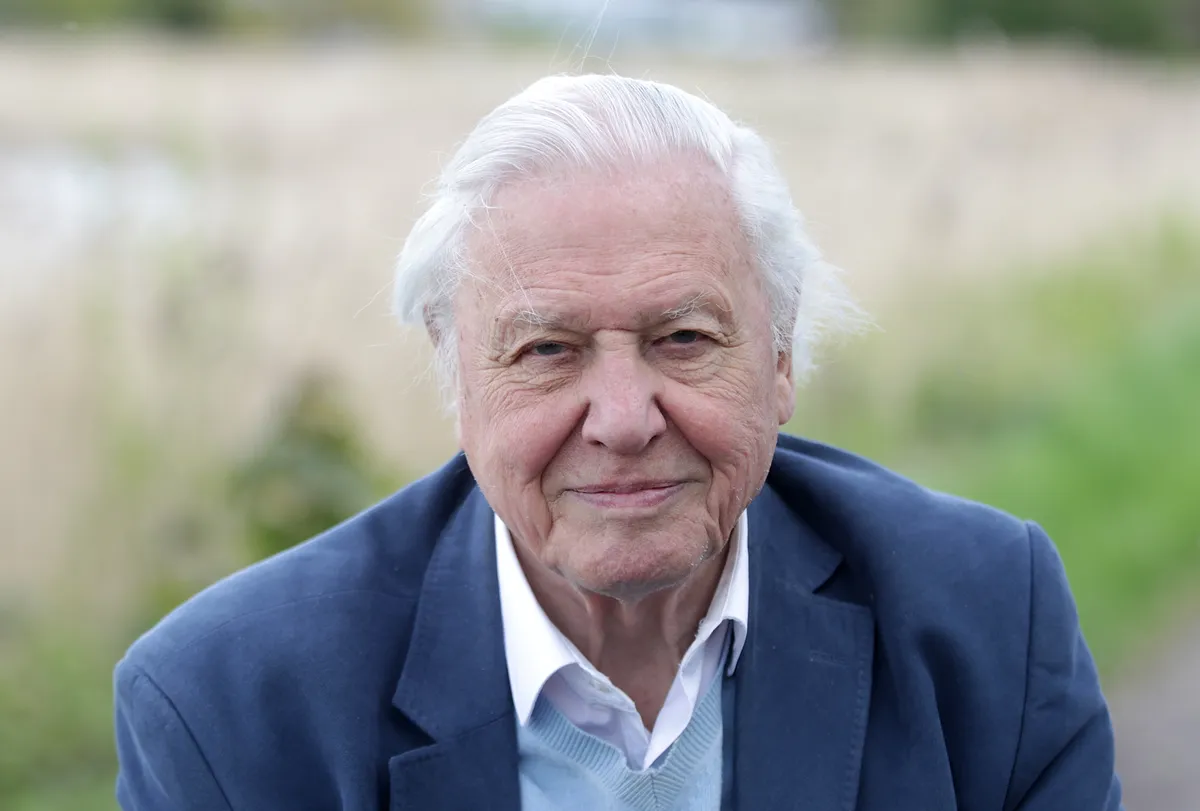
Why do a series on mating behaviours?
Because it shows the natural world at its most spectacular. Animals set out to impress one another when they start courtship and mating and my goodness how impressive they can be, so it makes for a wonderful sight. The equipment animals have for their mating displays, the feathers, all the paraphernalia, it can be very dramatic.
But certainly the most exciting and thrilling things in a bird’s life, for example, is their display. You can see that’s what it’s designed for, it doesn’t take a huge leap of the imagination to put yourself in the position of those birds and be impressed beyond bounds and beyond speech. What can be more impressive than the display of the Argus pheasant? It is just astounding.
You have a history with the Argus pheasant, can you tell us a little about it?
I’ve been trying to film the Argus pheasant for ever. Every time I went to Borneo I’d say, right we’ll do the Argus pheasant, and every time we failed. So I thought I would spend my broadcasting life without ever having filmed the Argus pheasant, it’s beyond question one of the most dramatic bird displays ever. I remember saying when I first heard about this series “Oh I hope you’ll be going for the Argus pheasant”.
Although you know where the bird is, because they have the dancing grounds so you know where they display, the problem is if you sit nearby they simply don’t come. So the answer is, which I never had the opportunity to do, is to place camera traps, not just one but six or seven and have the skill to decide where to put them, and also how to focus them.
My experience of camera traps is very limited but such as I know they are simply infuriating, because the bird comes along, it’s just about to do its thing and then it takes two steps to the right and all you see is the side of their feather, of their wing. But if you know what you’re doing and you have good luck, the results are sensational.
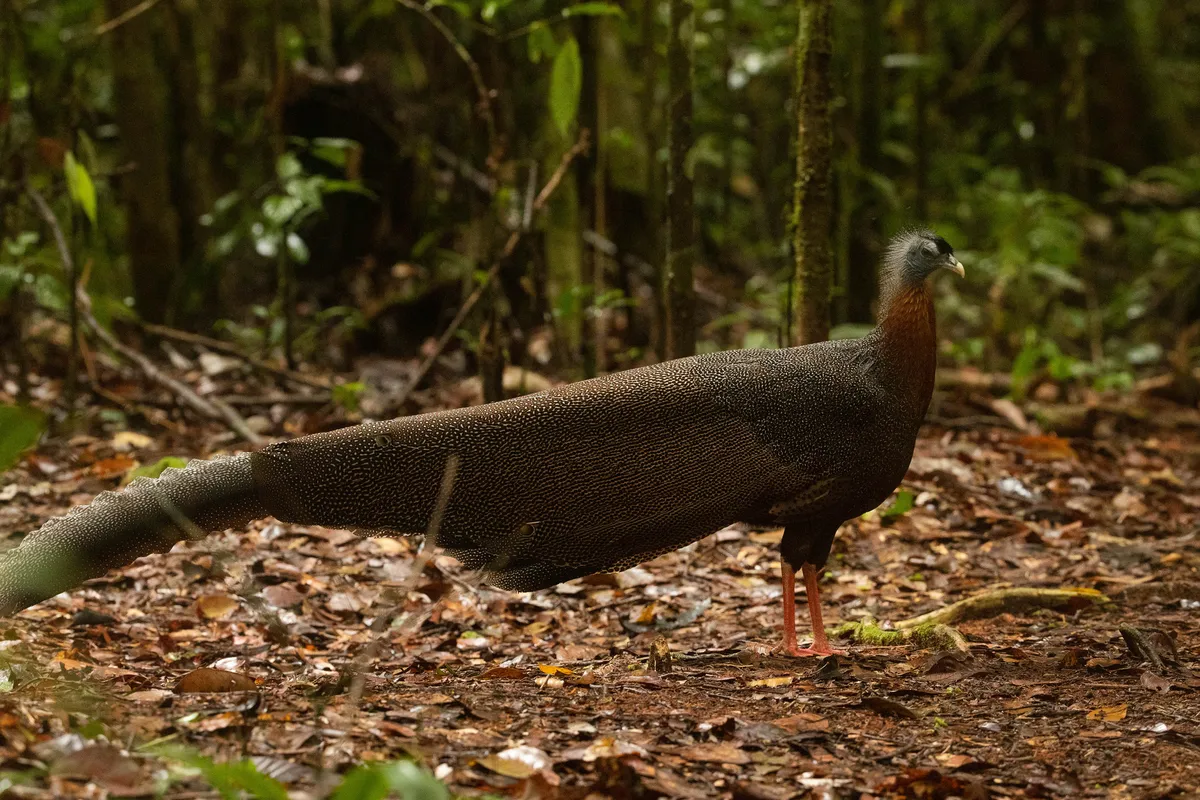
Can you tell us about your experience seeing and filming ostrich?
I thought I knew about the display of ostrich, which is very dramatic. The male comes along and opens his wings and then sways his head from side to side and ruffles and roll. And, well I was of course only half right.
Martin Colbeck who has filmed in Africa since as long as I can remember, he is a devotee of African natural history and so he knew perfectly well that there was another element of ostrich display which had never been filmed.
It’s a stamping display which is slightly comical, it has to be said, but it’s also extraordinarily powerful too, because the ostrich is a very powerful animal. But when the male gets infuriated or frustrated by the other bird not getting impressed he starts stamping. I think when viewers see it they’ll see something of an ostrich they’ve never seen before.
Please note that external videos may contain ads.
Ostrich Gives the Performance of His Life | The Mating Game | BBC Earth
They’re not all perfect are they? That’s the interesting thing about strategies, you have good and bad.
That’s true, they are representative of the animals at their most varied and extraordinary. There are some mating strategies that are so extreme that they have no connection with anything else.
It’s very difficult to imagine what life must be like in the very depths of the ocean, in total darkness where no light reaches. How do you exist there? In total blackness, how do you find a mate? They use luminescence to some degree but the answer is that when you do encounter a mate, you make sure you never miss your chance. For the hairy angler fish, the female takes the male, which are very small, and the male clings on to her, and the two fuse so that they become one, and their very blood circulation is shared between them.
The male is reduced to a sperm producing mechanism but it’s served its purpose because it has brought a different set of genes into the gene pool. I had never seen such a ravishingly beautiful film of them until The Mating Game. They’re like the finest spun Venetian glass, it’s breath-taking.
The level of investment the MacGregor’s bowerbird, like with the hairy anglerfish, is huge for a fairly common bird isn’t it?
The male has this extraordinarily complex maypole of weaving sticks around a little sapling and he builds a circular corridor that runs round the base, devoting his entire life to building it. The female finds a male that she likes and then watches his display, they mate and that’s it. These extraordinarily complex constructions totally baffled people, the first explorers coming into those forests saw these extraordinary things, a sapling hung with caterpillar droppings like decorations on a Christmas tree and then this immaculate circular corridor on which he dances, and that’s not the limit of it.
He also has an extraordinarily wide vocabulary of imitations, because of his early years spent listening to other birds in the forest, and other things in the forest, storing them in his mind. Then he sets about building this extraordinary apparatus, this extraordinary arena, extraordinary stage and the female comes along and he beguiles her with all these different calls, some of which include the calls of the human beings.
So filming a copulation interestingly enough means that you have to decide which is the best bower and which will appeal to the female most , then you set up there, and if you are right then you get the sequence. But that means that you’ve got to be able to think in the same way as a female bowerbird”.
Tell us about the dramas that struck you most, in the series.
I suppose one of the one of the most wretched situations, in which I didn’t envy at all, was that for the amphibians in one particular jungle in French Guiana, the conditions for mating and the displays were restricted to one very short period in the year when the jungle got so drenched that pools form on the ground for one or two days. You need a hundred percent humidity and high temperatures and no sunlight , and to top it all off, it happens over Christmas.
Why these people pick these ideas I don’t know but that’s the case, and it only happens once. There’s about a dozen, if not more, different species all of which want these pools. So it is a jamboree on a giant scale. It’s obviously a sensational event, the air filled with so much noise that you can hardly hear yourself speak. What a way to spend eating your Christmas pudding!
The place was absolutely throbbing with a dozen different species’ calls, all males, going absolutely berserk to try and find a female and sometimes finding one another, sometimes finding the wrong species. I think they wore ear defenders, and it only lasts for about 12 hours, that’s it.
What do you want people to take away?
I hope they’ll take away the overwhelming truth, which is how unbelievably ungraspable the variety of the natural world is, what governs the animal world, and what governs the way in which animals behave.
The mating game itself contains details which we understand perfectly clearly; that male is doing that to try and frighten the other one, or to challenge another one. But I believe it’s at its most exciting when a male carries out a behaviour that you know is designed to make the female say, wow, that is something. In those moments of high emotion you can put yourself into the mind of an alien creature, that like it or not, thinks that is beautiful by the same sort of standards that you think that is beautiful. There is no question that the display of the Argus pheasant is there to make the female feel some emotion.
You may call it enjoyment, they may call it delight but you can, whatever name you put on it, share in it to some degree. Darwin had no doubt whatsoever that the creatures with the greatest sense, delight in sheer beauty. In birds, there is no question, the evidence is there, and the Argus pheasant says it all.
Interview with executive producer Keith Scholey
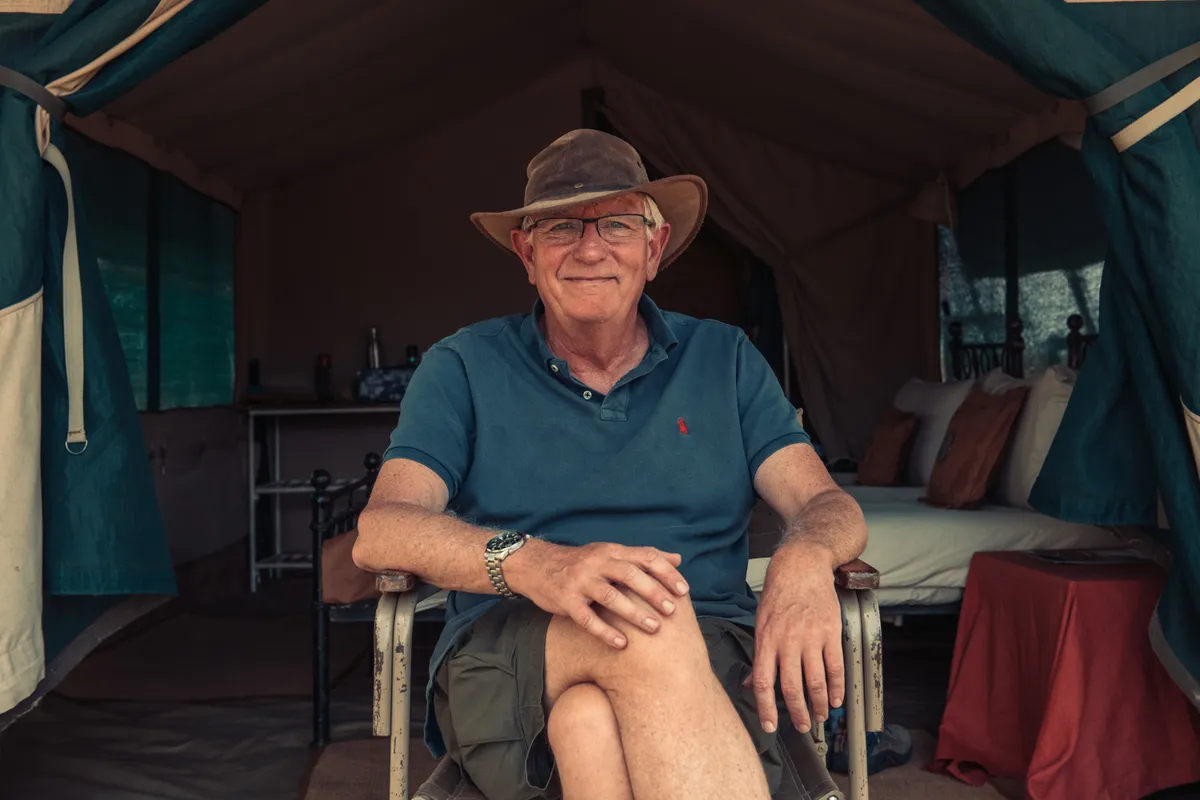
How did the idea for The Mating Game come about?
We did a series called The Hunt a few years back. It was very much behavioural driven where we were not just looking at predators catching the prey, but also the strategy of how they do so. The Mating Game follows the same idea, looking at the strategies that have evolved to succeed in mating. The actual moment of partnership is not what the series is about, sometimes we don’t even show it. It really focusses in on the strategy, it’s about dance-offs and display.The great thing is that everyone can empathise with the different strategies involved, most of us have been there and thought about these kind of issues. It was interesting and fun.
I think some people will say with the world in crisis, why make a series about animal mating behaviour? At Silverback, we think hard about these issues, and at the same time, we’re releasing The Earthshot Prize: Repairing The Planet programme. In most cases, The Mating Game will follow on from Strictly Come Dancing, which is very appropriate.
The Mating Game is there to remind people that the natural world is wonderful, and we need to thrill people with the wonder of nature.
How did you decide which species to film for The Mating Game?
Right from the start, we do a lot of research and find the best stories, it's all very mission-orientated. For The Mating Game, more than any other programme, the timing is crucial, as you need to be there at exactly the right time. And you also want to make sure you’ve got different stories in a variety of habitats.
Which species were the most tricky to film for The Mating Game?
The biggest gamble in the whole thing was the pheasant. But every sequence has a different type of challenge – getting the humpback whale behaviour on camera, explosive breeding frogs, even the first episode, the ostrich sequence which we thought was pretty straight forward, but it just didn’t happen for the first year. You think it’s a dead set, but you come back with nothing. Which is a bit nerve-wracking.
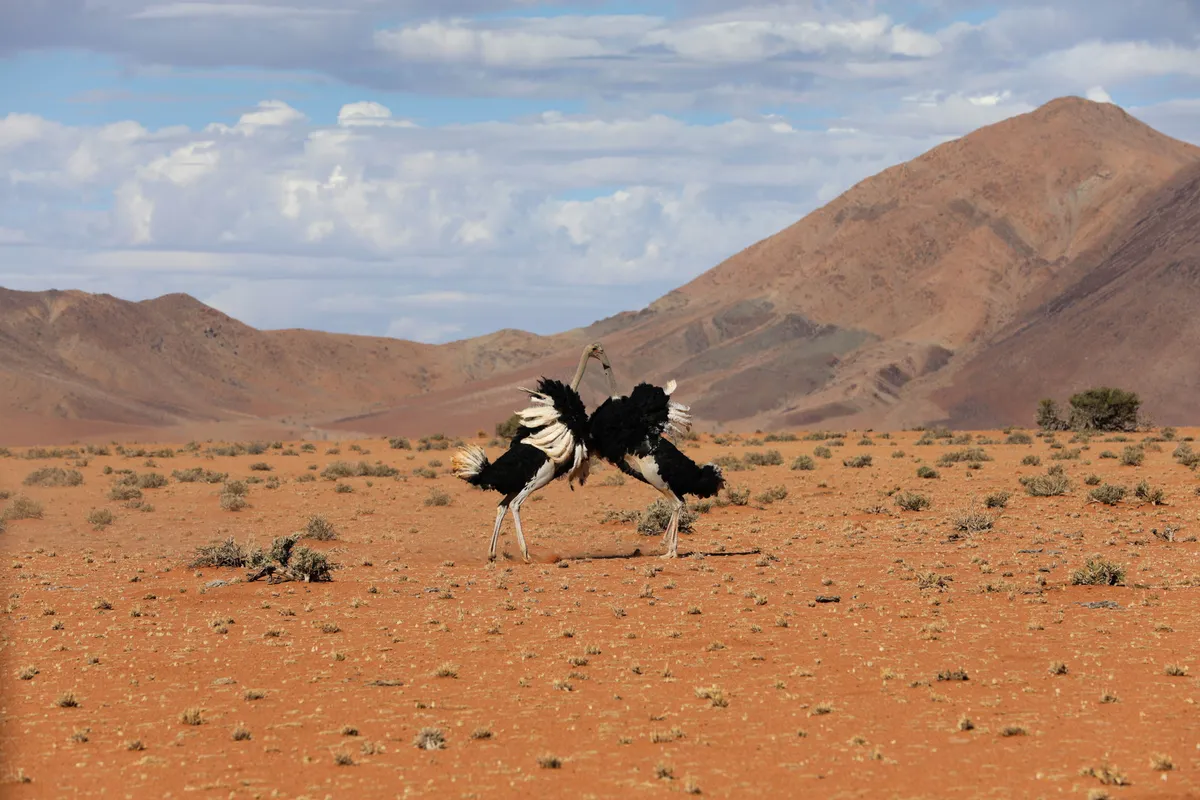
No-one has ever seen humpback whales actually mating, even though humans have been studying them for decades. When filming the chase scene, there were a number of safety precautions we had to take. The key thing is to work with the scientific team who do this all time and go out with humpback whales all the time.
What you realise is that the humpback whales are very careful about not bumping boats, they’re aware you’re there and avoid you. The tricky bit is the underwater filming, with a pole camera – team created a stabilising camera to give these amazing shots, it’s massively exciting.
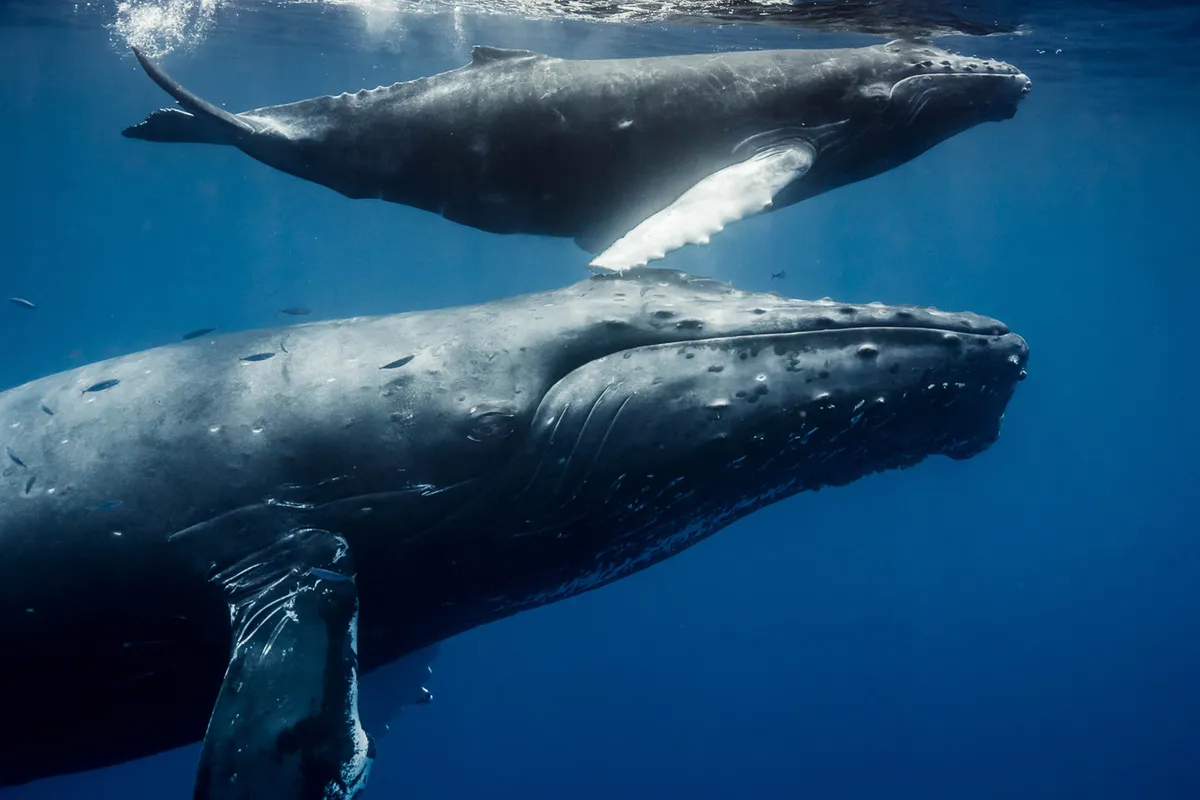
The really interesting bit is at the end of the chase, Doug Anderson got in the water to see what was going on. Doug is an extraordinary guy, as you’ll see in the making of footage, he is in the water as a tiny diver next to these huge mammals, and then they swim off and he doesn’t flinch. Most people suspect that when the mating does happen, it happens very deep and/or after dark.
Then with the termites, we had to work with the scientists as the only way to film the queen is to excavate the section of the termite mound with the queen in it. The guy who filmed this – Alistair – is a real master at filming macro sequences. You have to get the right light and humidity etc to make sure the colony keep operating at normal.
For the pheasant, actually seeing them is really difficult, and then filming them displaying is next to impossible. They actually display all year round, so you need to find their display grounds. Tim Laman worked out how to put out the camera traps and filmed for two years – it was very lucky, but also required a lot of skill. You can’t just put out a wide angle camera, because you won’t get sequence-worthy footage. But what’s amazing is that there’s a huge range of trail cameras now available and increasingly they can cope with difference light conditions. The quality you can get out of a camera trap is really high, and the triggering devices can be really effective. You need it get the settings just right, as you don't want it to be triggered by every leaf that falls off the tree and use up all the space on SD cards and all the batteries.
What’s great in the series, is that each episode has a bit in it which is a bit weird.
How did the covid-19 pandemic effect filming for The Mating Game?
A lot of the things we were planning to do were suddenly not possible. Our life over the last 18 months has been a lot of ‘finding plan Bs’ when we had to. For example, we ended up filming the seahorse sequences off Portugal, instead of Australia as originally planned.
As with A Perfect Planet, Attenborough had to do the narration for both The Mating Game and The Earthshot Prize: Repairing The Planet from his home. It actually works really well. Graham Wild who does the recording and mixing had to work out how to make the room suitable for recording – there were lots of cushions for dampening the sound. I always have to pinch myself when hearing his extraordinary narration.
Most of the editing was done remotely except at the very end of the series, but our technical team set us up really well in order to log all the footage, select parts and send it editors. We've gotten very good at remote working and screen sharing. If this had happened 20 years ago, we wouldn’t have been able to do it. And I think what’s great is that we’ve learnt a lot of things that will carry on after the pandemic. Editors working on their own are actually very efficient.
Which species feature in The Mating Game?
The Mating Game includes a wide range of animal species around the world, including bullfrogs, pheasants, zebras, humpback whales, kangaroos, monarch butterflies and termites.
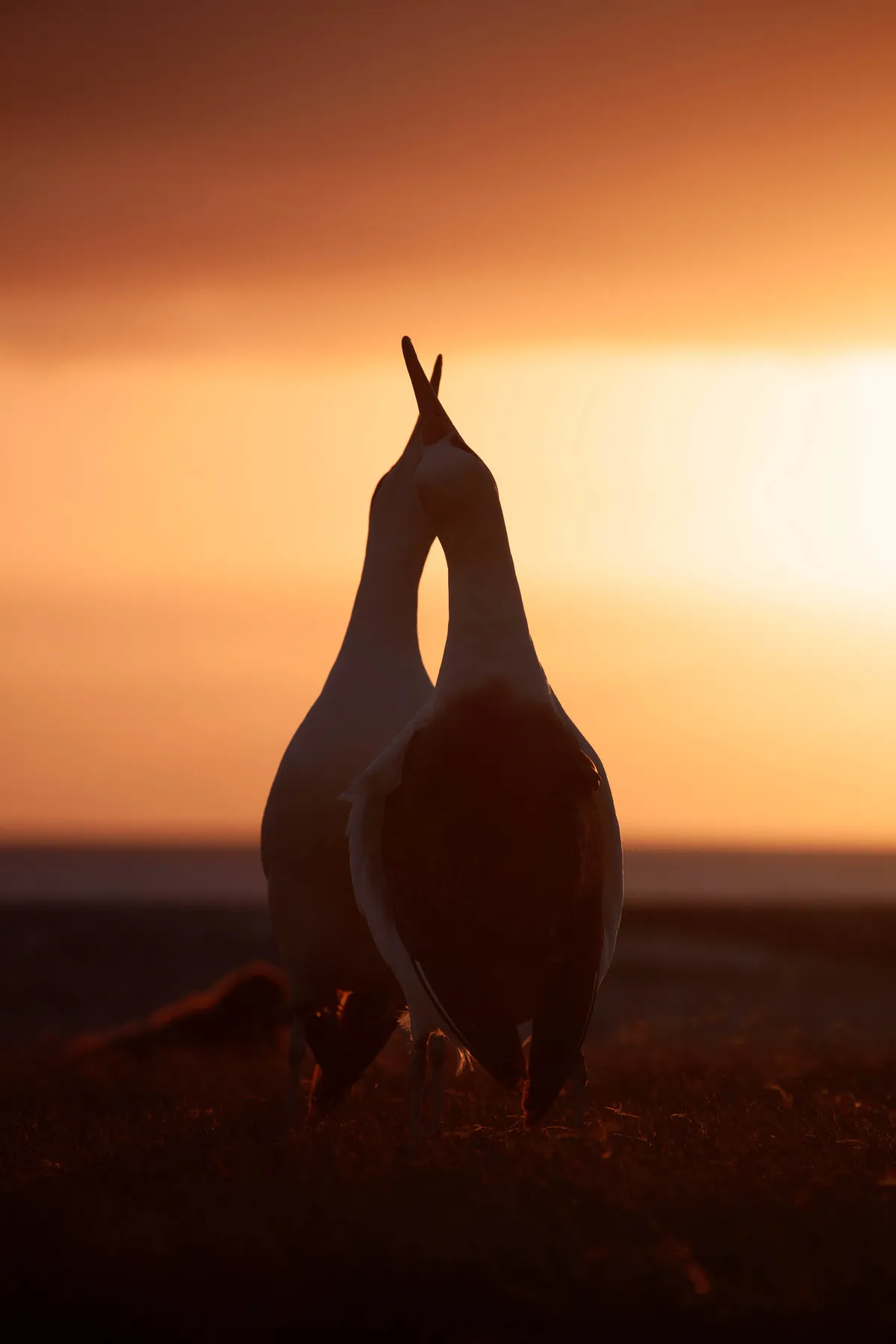
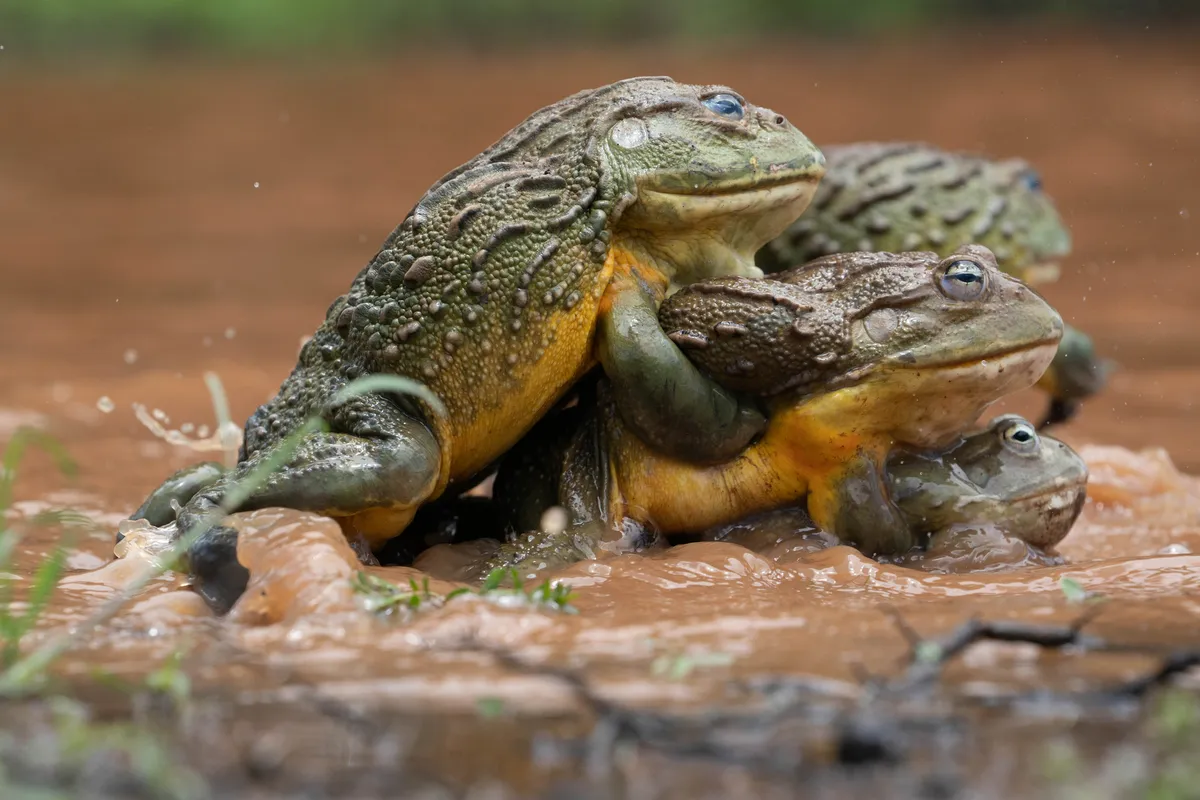
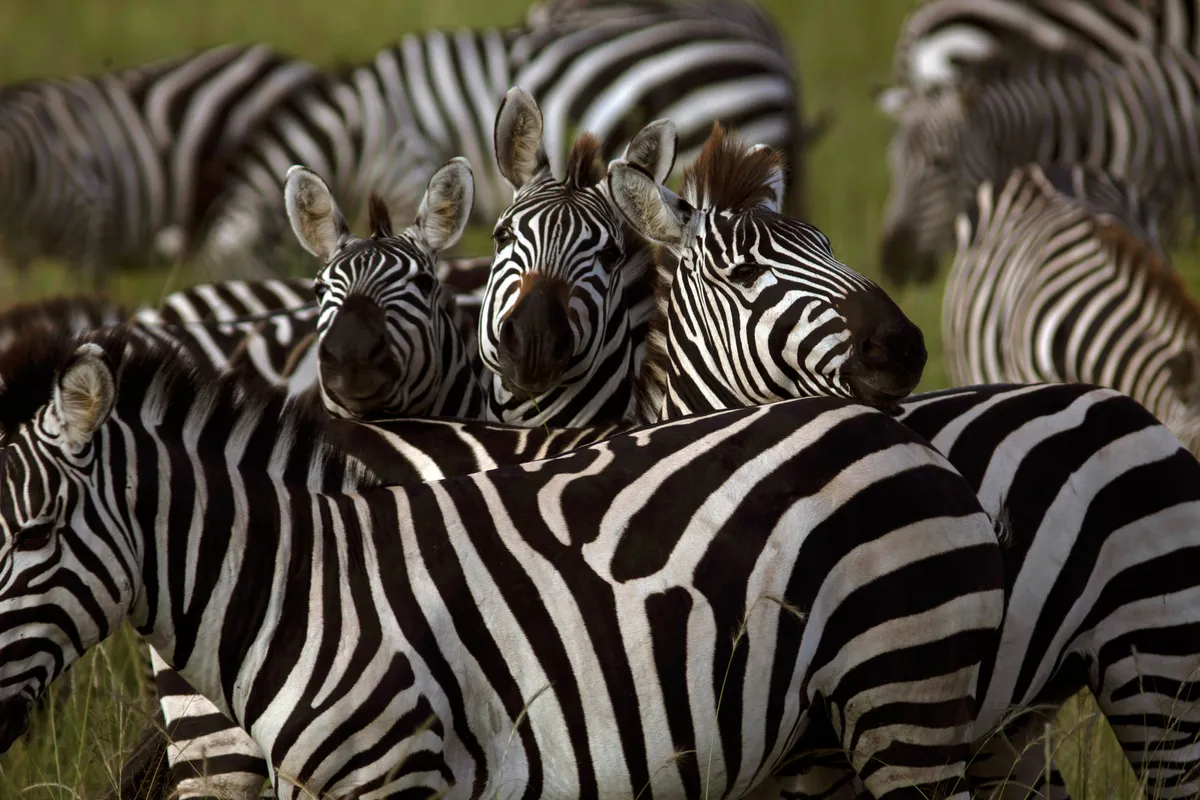
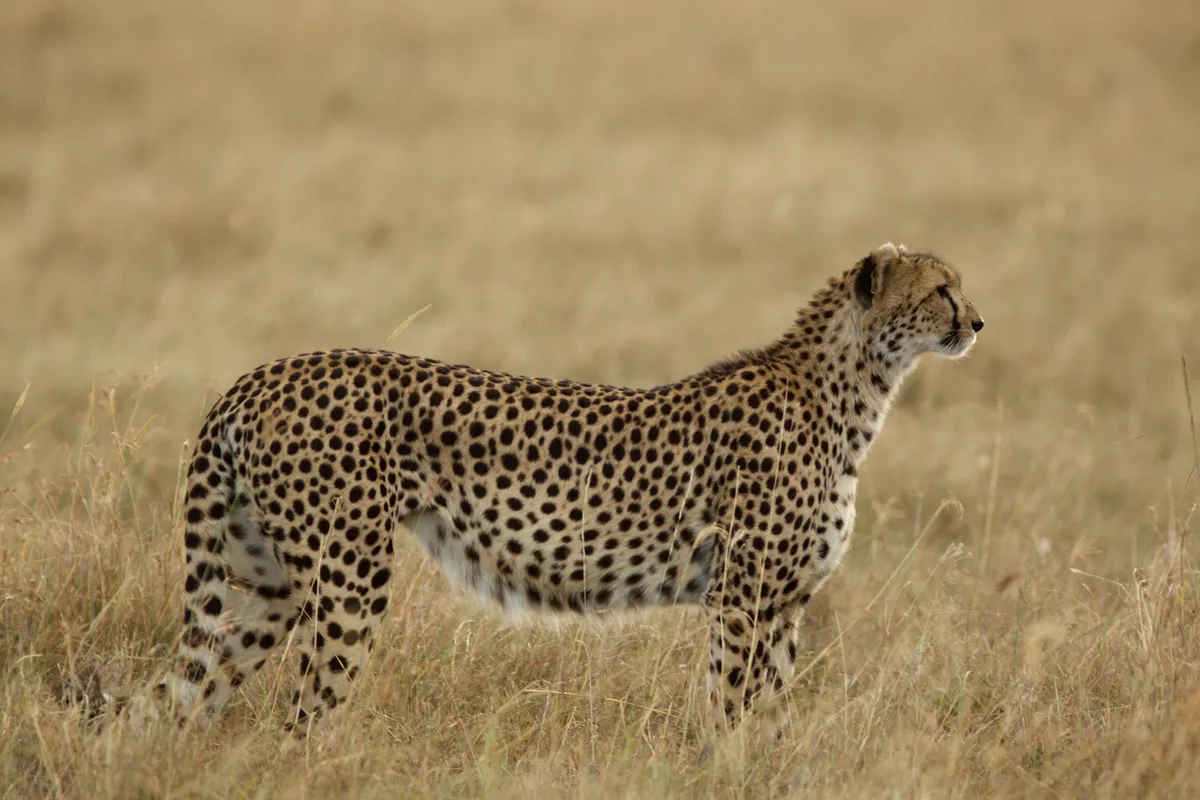
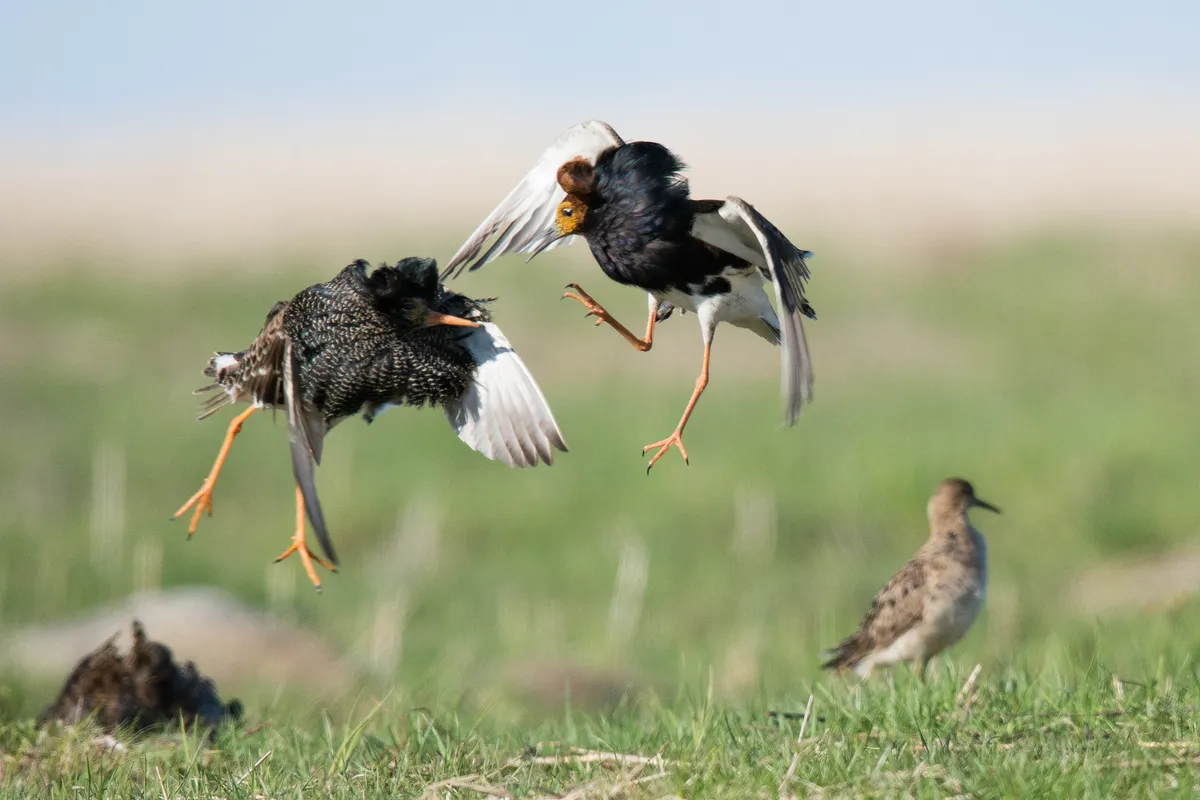
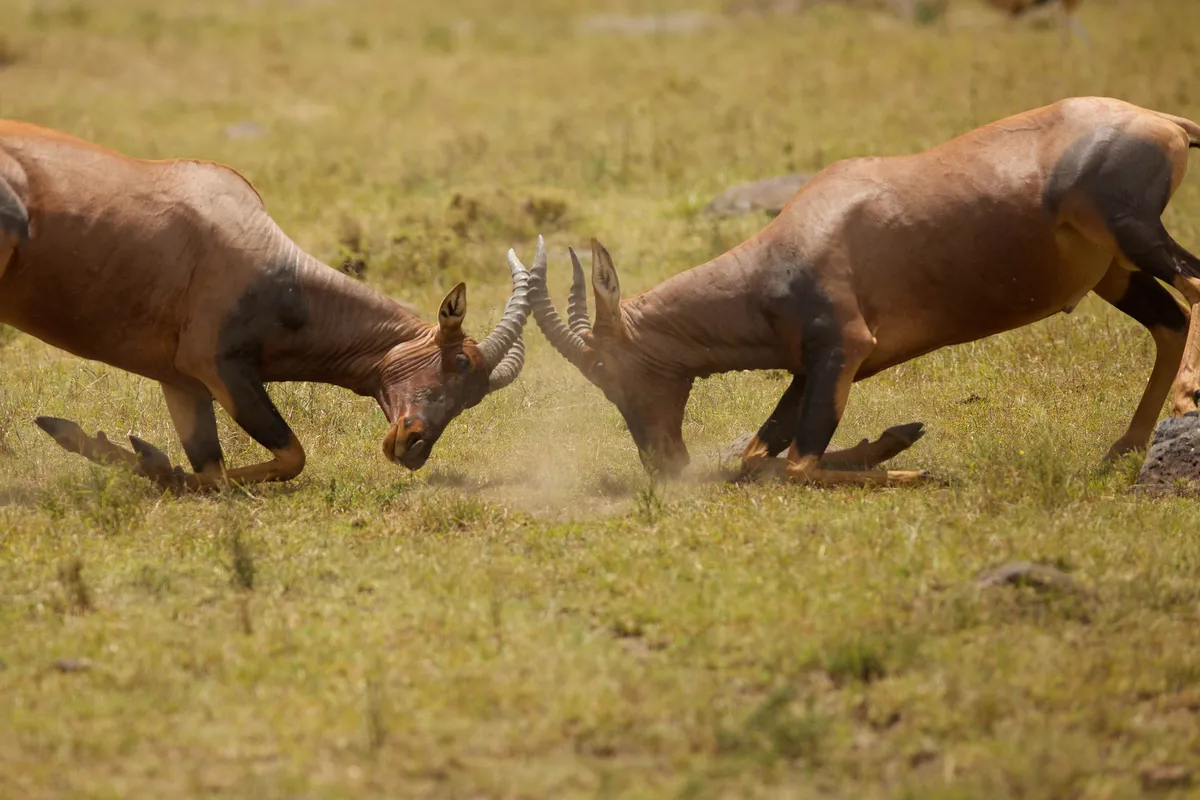
Main image: A humpback whale mother and her calf, in the warm nursery waters of Maui, Hawaii. ©Olly Scholey/Silverback Films/BBC




